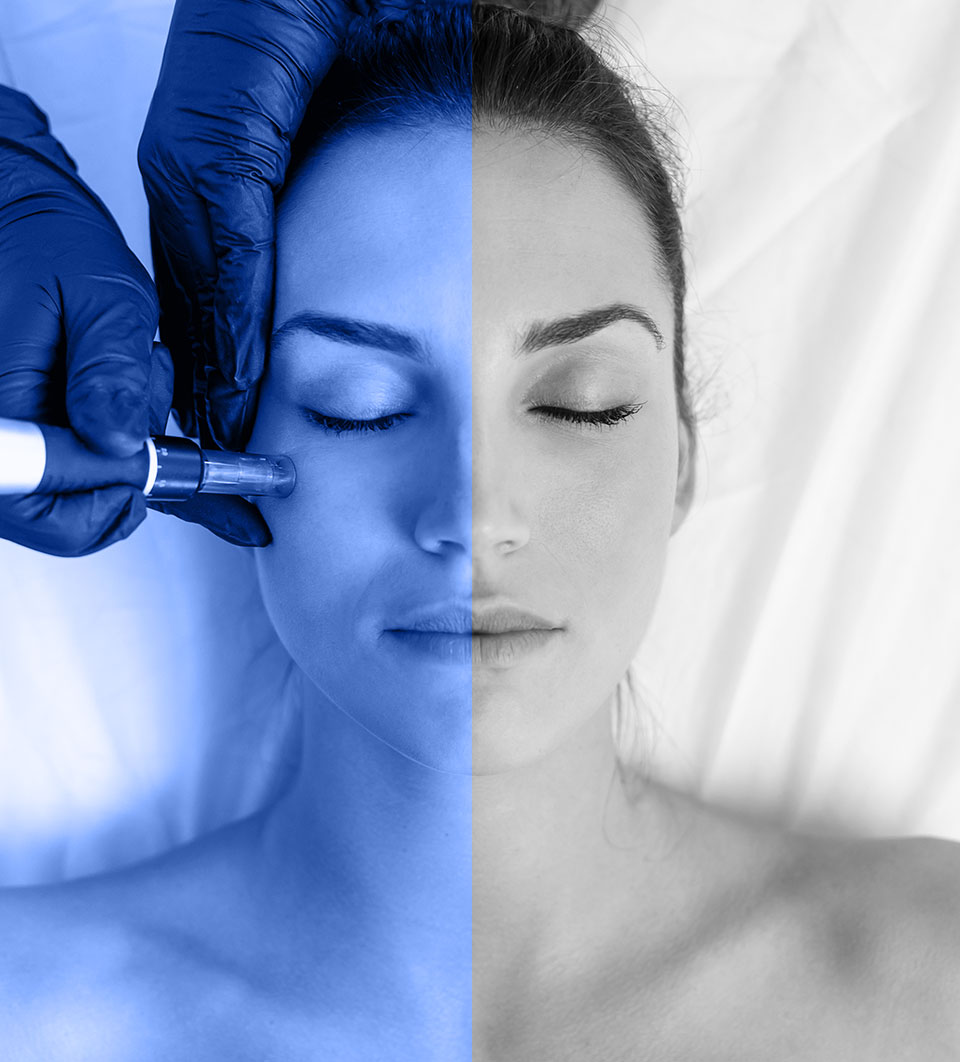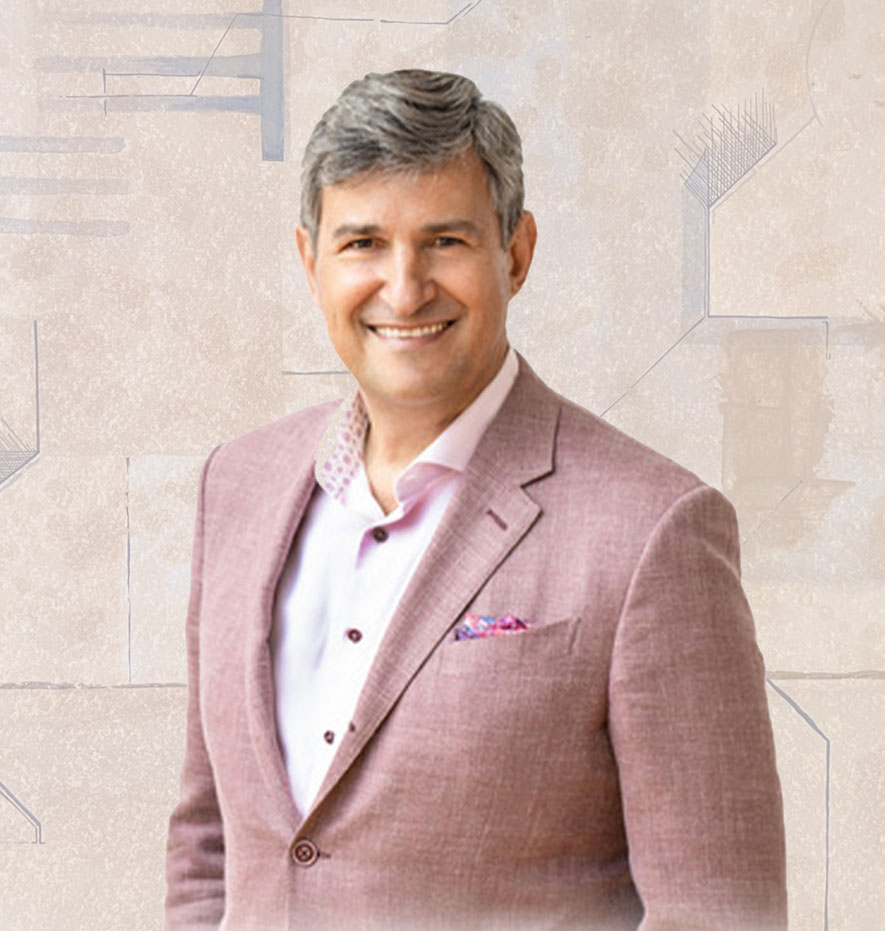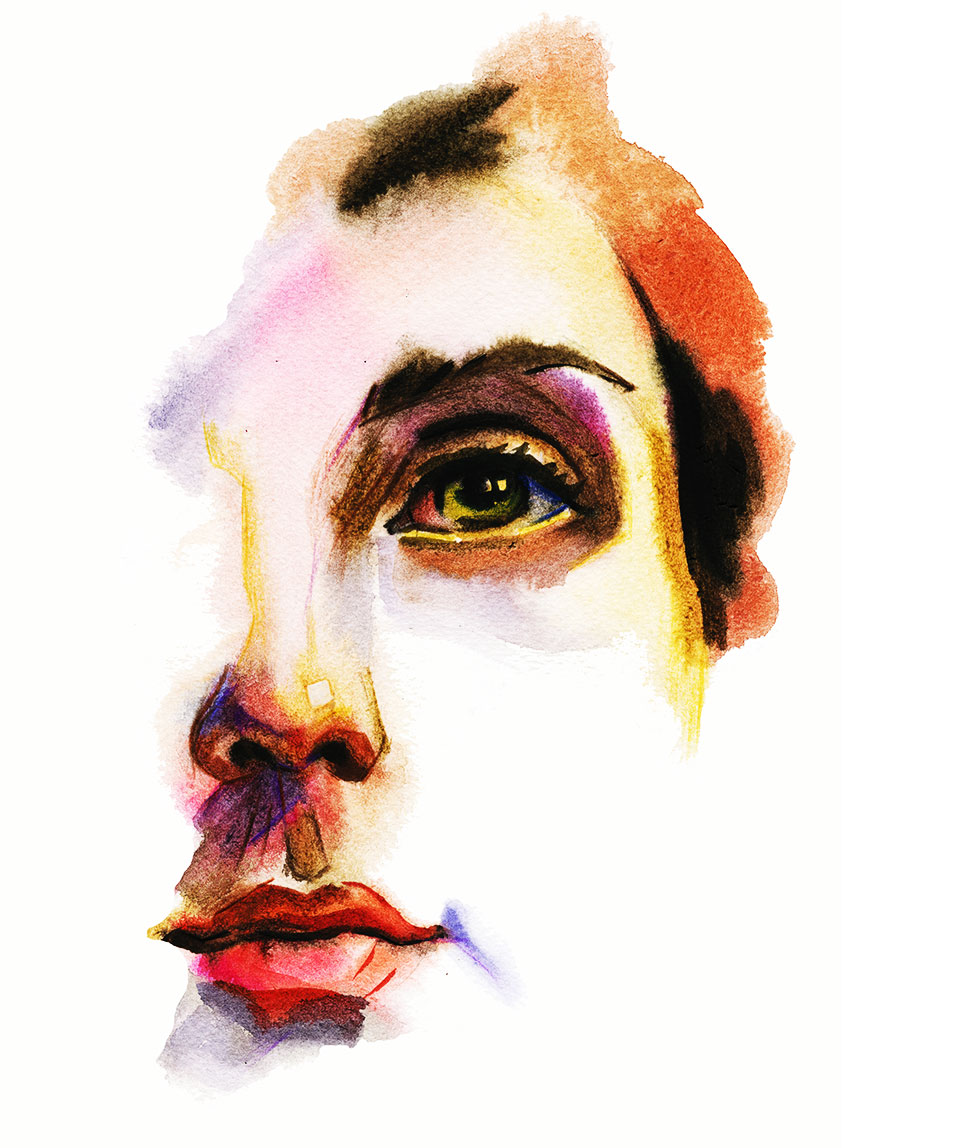PRP SKIN
Natural Rejuvenation
with PRP
We offer non-surgical cosmetic procedures that will leave you with smoother, more youthful looking skin.
PRP, which stands for platelet-rich plasma, is a nonsurgical cosmetic procedure that can be used for a number of purposes including promoting hair regeneration on the scalp and correcting skin imperfections and conditions including wrinkles, acne, and scarring.

How Does PRP Work?
It’s a fairly simple process that involves withdrawing blood from the patient’s own body (usually the upper arm or inner thigh), then placing it in a centrifuge. A centrifuge is a machine that essentially spins the blood around and separates all of its different components. The objective is to isolate the platelet-rich plasma from the other components of the blood. The remaining components are then discarded or stored for other purposes, whereas the PRP is reinjected into the affected areas of the face.
PRP treatment for skin conditions is known to stimulate the muscles in the face and promote natural and healthy cell regeneration, which results in a smooth and more radiant overall appearance. PRP is an autologous procedure, which means that it only utilizes materials that are derived directly from your own body and this reduces the risk of infection, rejection, or suffering an allergic reaction.

PRP & Microneedling
Microneedling is a technique that’s often used in conjunction with PRP facial treatments in Toronto. It involves preparing the skin on the face for the impending injection by opening up the pores with a micro-needle or surgical pen. Once the pores are completely open and fully stimulated, it’s easier for the skin to accept and absorb the injected PRP and this is a form of collagen induction therapy.
Dr. Gantous at Toronto Facial Plastic Surgery has had great success incorporating PRP with microneedling and stands by the outstanding and long-lasting results he’s been able to achieve for his patients.
The Benefits of PRP with Microneedling
- Smoothing out uneven skin tones
- Reversing the look of fine lines, wrinkles, laugh lines, and marionette lines
- Removing acne scars and other impurities in the skin
How Does PRP Work
for Facial Rejuvenation?
Injecting your skin with growth stimulants that are derived directly from your own genetic makeup can help drastically improve collagen production which promotes healthy skin elasticity and radiance.
What Is the
Recovery Period Like?
The good news is that there’s virtually no recovery period associated with this procedure. You’re free to resume your normal activities within 24-hours and can return to work the next day.
Since this is a nonsurgical procedure, very little topical anesthesia is required at the injection site, you can drive yourself home immediately afterward, and the recovery time is minimal with no side effects.
PRP
Used for a number of purposes
Surprisingly, the décolletage or décolleté area is often one of the most neglected parts of the female body when it comes to providing self-care and cosmetic treatment. Yet, it’s also one of the biggest giveaways of your age. Just like your face or any other part of your body, the décolleté is subject to extensive sun exposure, the effects of aging, or skin damage. Fortunately, Toronto Facial Plastic Surgery offers comprehensive treatment options including PRP décolletage rejuvenation to help you look and feel years younger.
What Is the Décolletage Area?
Décolletage is a French word that’s typically used by the fashion industry to describe the upper portion of a woman’s torso consisting of the neck, chest, upper back, and shoulders. While many women tend to apply strict skincare regimens to their faces, the décolletage is often left untreated and this can easily expose a woman’s age. Wrinkles, fine lines, and loss of volume are all natural processes that intensify over time as the skin tends to lose elasticity and collagen.
How Does PRP Work for Décolletage Rejuvenation?
The heavily concentrated plasma stimulates collagen production in the affected area so that the skin is revitalized and renders a much younger and more radiant appearance. PRP décolleté treatment has a high efficacy rate and most patients notice results right away. The look of décolleté wrinkles and fine lines is greatly reduced or in some cases, eliminated while volume is restored.
What Conditions Can Be Treated with Décolletage Rejuvenation?
The main concern women who are seeking this treatment have is reducing the look of wrinkles and fine lines on their skin. However, décolletage rejuvenation can also diminish extensive sun damage that accumulates on exposed skin over a number of years. Some women might experience some discoloration or the formation of premature freckles and wrinkles due to constant tanning or lack of a proper skincare routine. Dr. Andres Gantous is one of the premier facial plastic surgeons in North America and is recognized worldwide for his unique ability to effectively administer décolletage rejuvenation.
Facial plastic surgery goes well beyond simply trying to treat age-related skin problems. Acne scar removal and treatment is also growing in popularity right now amongst the younger population. PRP microneedling for acne scars is one of the most effective treatments available in the industry today. Also known as the Vampire Facial, it goes much deeper than just the surface of the skin and eliminates the underlying bacteria that cause acne in the first place.
What Types of Acne Can Be Treated with PRP?
PRP (Platelet-Rich Plasma) acne treatment is also referred to as getting a Vampire Facial because this treatment uses samples of your own blood to rejuvenate the skin and actively restore its natural beauty. It can help eliminate all kinds of scars caused by acne including the following:
- Whiteheads
- Blackheads
- Nodules
- Cysts
- Pustules (more commonly known as pimples)
The great thing about PRP for acne scars is that there’s virtually no risk involved, and you can’t develop an adverse reaction to your own blood. Unlike commercial face washes or creams, there are no potentially harsh chemicals that could inflame sensitive skin.
How Does PRP with Microneedling Work for Acne Scar Treatment?
First, we draw a small amount of blood from your arm and then transfer the blood to a centrifuge where it’ll go through a brief spinning process. During the spinning process, the Platelet-Rich Plasma is separated from the red blood cells. The PRP contains a great deal of vital nutrients that can be used to repair damaged skin cells and regenerate collagen and elastin to produce a healthy and smooth appearance.
The end result is often referred to as Liquid Gold by facial plastic surgeons because it contains only the absolute purest healing and restorative properties from your blood.
How Many PRP Microneedling Treatments Are Required?
Depending on the amount of acne scars that need to be treated, you might need more than one session to see the best results. Most patients require a minimum of two sessions before they start noticing a difference in reduction of their acne scars.
We will assess the quality of your skin and examine the severity of your acne scars before starting treatment to determine how many sessions you need. Each session lasts anywhere from 15 to 30 minutes.
What Is the Recovery Time Like?
There’s virtually no recovery period for collagen therapy for acne. Since a purified version of your own blood is used to treat your acne scars, there’s no risk of developing an infection or allergic reaction to the treatment. After each treatment session, you’re free to resume your regular activities and don’t need any downtime.
You should start noticing results after the first two sessions. With regular biweekly sessions, you should expect to have clear skin within about four to six weeks.
PRP hair treatment (short for platelet-rich plasma) is still a new method of encouraging the body to naturally produce new hairs where it was previously depleted or falling out. The process involved in this hair restoration technique is quite simple in nature, but it can take anywhere from 60-90 minutes to complete in a single session depending on the number of platelets required and the mass of the scalp that needs treatment.
Dr. Gantous is a specially trained and highly qualified facial plastic surgeon in the field of hair restoration and through PRP treatment for hair, he can help you regain your confidence in your appearance. If you’ve been noticing a growing bald spot anywhere on your head, then it’s time to schedule an appointment at the Toronto Facial Plastic Surgery clinic today.
How Does PRP for Hair Regrowth Work?
PRP is an effective hair growth treatment method that involves extracting blood from the patient’s own body (usually either the arm or inner thigh where there’s a higher repository of cellulite). The blood is then placed inside a centrifuge (a state-of-the-art mechanism that’s designed to spin the blood around at high speeds). Spinning the blood in the centrifuge allows the components of the blood to be separated. From those components, the platelet rich plasma is isolated and then inserted into a syringe.
The PRP is then reinjected into the portion of the scalp that’s exhibiting thinning hair or minor hair loss, which in turn, stimulates the hair follicles so that they become reinvigorated. It can take anywhere between 4-6 months for results to be noticeable and regular treatment may be required after that time depending on the needs of the patient and the recommendations of the physician. Interim follow-up appointments will also be scheduled in the meantime to track the progress of the hair growth before further treatment will be administered.
Who Is a Candidate for PRP Hair Treatment?
Patients who are in the beginning stages of experiencing thinning hair are the best candidates for undergoing PRP hair restoration treatment. Hair follicles should still be fully functional in order for this treatment to work because the whole point is to activate them through the injection of PRP. If the hair follicles are completely dead, then the treatment will be ineffective. Hence, patients who are experiencing complete hair loss are considered ineligible for this particular treatment.
What Hair Growth Results Can You Expect?
You’ll most likely start to notice significant hair growth within the 4-6 month period following your initial procedure. After that, additional treatments may be required in order to maintain the results or treat other parts of the scalp where hair is thinning. The decision to continue with further treatment is left to the discretion of your doctor and whatever you decide to do at that point.
Toronto Facial Plastic Surgery is a highly esteemed plastic surgery clinic that focuses on providing in-depth surgical and nonsurgical cosmetic treatments to its patients. Dr. Andres Gantous, our chief facial plastic surgery specialist, is world-renown in the industry and has well over 20 years of experience. To schedule a preliminary consultation at our clinic, please feel free to contact us.
Are you thinking about getting PRP treatment but aren’t sure if it’s the right choice for you? Read through these PRP treatments frequently asked questions for all the information you need!
1. What is PRP with microneedling?
Also known as the vampire facial, PRP with microneedling involves using miniature needles to puncture minuscule holes in the skin and stimulate the body’s natural collagen production to reduce the look of fine lines and wrinkles. A small amount of blood is extracted from another part of your body (usually your upper arm or inner thigh). The blood sample is placed inside a centrifuge where it’s spun around for a few seconds to isolate the platelet-rich plasma from the other components of the bloods. Those purified platelets are then reinjected into the area that needs treatment, whether it’s under the eye, the forehead, or the nasolabial folds (also known as smile lines).
2. What conditions can be treated with PRP microneedling?
PRP with microneedling can be used to treat a number of different conditions. Anything from reducing the look of age spots to minimizing wrinkles, fine lines, and crows’ feet can be treated. Many clients even consider PRP for hair loss and acne treatments as well.
3. Where can PRP injections be placed?
Since PRP is a versatile treatment method that can be used to treat a number of conditions throughout the body that aren’t strictly related to aging, PRP injections can be placed pretty much anywhere. It’s often used to ease muscle tension and stimulate collagen production which also helps reduce inflammation in the joints.
4. Are there any side effects of PRP treatment? If so, what are they?
PRP injections involve using the patient’s own platelets to treat ailments and signs of aging throughout the body. Therefore, the risk of experiencing an adverse reaction is very minimal. However, some patients may experience slight discomfort or irritation at the injection site during the healing process. But this should subside quickly. As long as you go to a clean clinic that takes all of the proper precautions when preparing for the procedure, you have nothing to worry about.
5. What is the recovery period like?
The recovery period for PRP treatment is fairly standard compared to other injectables and it varies from client to client. Some clients may require a full five to seven days to fully recover and they may notice a little bit of redness, but there should be no pain or discomfort as long as you follow all of the aftercare instructions carefully.
6. How many PRP treatment sessions are required?
That depends on a lot of mitigating factors including the type and severity of the condition being treated, your body’s natural healing process, and how stringent you are with your skincare regimen. It’s recommended that even after undergoing PRP treatment, you continue cleansing and moisturizing your skin. If your doctor prescribes a specific skincare regimen or product to maximize the results, make sure you listen to them. On average, though, most PRP treatments can last anywhere from one to two years if done right.
7. How is PRP treatment different from other injectables?
PRP treatment doesn’t contain any foreign chemicals or materials. All of the ingredients are extracted directly from the client’s own body, which minimizes a number of health risks including having an allergic reaction. Other injectables like Botox, however, contain foreign ingredients. While these aren’t necessarily harmful, they still have the potential to cause adverse reactions for some clients.
8. Who is a good candidate for PRP treatment?
PRP treatment is an excellent option for clients who prefer a natural way to reduce the signs of aging on their face. Combined with a strict skincare routine, PRP treatment can help enhance your appearance and take years off your face. Incidentally, PRP is also a choice treatment option for people who suffer from chronic joint pain and inflammation throughout their bodies as it stimulates collagen production.
9. Does PRP treatment hurt?
If you’re not used to needles, then you might feel a slight pinch the first time you undergo PRP treatment. After the second or third injection (depending on how many you’re having done in a single session) you most likely won’t even notice the slight twinge anymore. PRP treatments are generally not painful, but that can also depend on the client’s sensitivity and the area where the needle is being injected. Actually, PRP is often used to relieve pain and inflammation.
10. How long do I have to wait before I start noticing results?
Most patients start noticing visible results from PRP treatment almost immediately. Of course, results are more noticeable with continued treatment, but you should continue to see gradual improvements in the quality and texture of your skin around the two-week mark post initial treatment. With continued treatment, you’ll notice even greater results around the six to 12-month mark.
11. Who should avoid PRP treatment?
PRP treatment is 100% natural and therefore safe for all clients. With that said, it’s important to do your research and read online reviews for clinics and practitioners alike. Make sure the plastic surgeon administering your treatment is licensed and experienced. Dr. Andres Gantous at Toronto Facial Plastic Surgery is double board-certified, and he has over 20 years of professional experience performing PRP treatment.
12. Does insurance cover PRP treatment?
Depending on the nature and reason for the procedure, some insurance companies may cover PRP treatment. Contact your insurance company to find out if you have coverage for PRP treatment. At our clinic, we also offer comprehensive payment plans for our clients.
13. What is the recommended aftercare for PRP treatment?
During your initial consultation, Dr. Gantous will provide you with a list of pre- and post-treatment care instructions. The night before your scheduled treatment, wash your face gently with a mild cleanser and apply a serum or cream containing hyaluronic acid. Refrain from wearing makeup for at least 24 hours before and after your treatment because it can clog your pores. Follow your doctor’s skincare instructions after treatment. Once your skin is fully healed, you can resume your regular skincare routine.
Choose Toronto Facial Plastic Surgery
For over 25+ years, Dr. Gantous has been one of the leading and most innovative facial plastic surgeons in North America and Internationally. He has attended and served as the keynote speaker at numerous facial plastic surgery conferences and events around the globe. Countless patients worldwide have traveled to Toronto Facial Plastic Surgery for surgical and non-surgical procedures, all with excellent results and complete satisfaction.
Dr. Gantous will take the time to answer all of your questions and address your concerns prior to your procedure. Contact us today to book your appointment!






